K-12 OUTREACH FLIGHTS
We have been launching high-altitude balloons with K-12 schools and organizations across Wyoming since 2014. This is our bread and butter, the central focus of our high-altitude balloon program. The primary purpose of the program has been to generate interest and excitement in STEM by allowing K-12 students to fly their own payloads to the edge of space.
Although the program has been quite successful, impacting more than 3,000 students in Wyoming as of 2024, we are always looking for ways to improve the experience for our participants. This page provides information for teachers and educators about how to get involved with our high-altitude balloon program.

Hosting a K-12 Balloon Launch
ELIGIBLE GROUPS
These types of launches are available to all public and private K-12 schools, homeschool groups, afterschool programs, summer camps, and other K-12 educational organizations located in Wyoming. We are always looking to work with new groups, especially those that serve minority or underrepresented students.
REQUESTING A LAUNCH
If you’d like to host us for a balloon launch at your school or organization, the first step is to do some homework about our program. Make sure you understand our expectations for the student payloads as described further down on this page. We also strongly recommend that you read through our Balloon Launch 101 and Ballooning FAQ pages to learn more about how our balloon launches work.
The next step is to formally request a balloon launch using our online K-12 Balloon Launch Request Form. Filling out and submitting this form will officially put you on our radar. We will reach out to you soon after to schedule the launch and begin discussing next steps.
Student Payload Boxes
We currently have only a few constraints for our K-12 student payloads. Weeks before the launch, we will send you, the teacher, a set of empty payload boxes that can be used to house the student payload items. You and your students will then work together to decide what to include in the boxes. As long as the payloads abide by the limited constraints described below, we will fly them:
- The total combined weight of all student payload boxes may NOT exceed 5 lbs (2.3 kg)
- The payloads may not include any of the following: live animals; items that are combustible or explosive; or items that are otherwise illegal to possess
- There should not be any sharply pointed objects protruding from the payload boxes
- Liquids should be used conservatively
- All potentially messy items should be enclosed in sealed plastic bags
Helpful Guidelines for Developing Student Payloads
Elementary School Participants — Students at this age should simply have fun and explore their ideas. We want to encourage them to ask questions and be curious about science and engineering. Teachers can help the students decide what items to fly in the payload boxes. They might also encourage their students to make predictions about what they think will happen to their items during flight. Teachers are more than welcome to develop their own set of requirements as well. However, student excitement is all that we expect!
Middle School Participants — While not required, we hope that middle school students will take payload development a step further by formulating a thoughtful description, rationale, and hypothesis for each item that goes into their payload boxes. We realize that many students in this age group are only beginning to learn about the scientific or engineering process. However, we want to encourage them to start thinking like a scientist or engineer, giving careful consideration to what they put in the payload boxes and documenting their progress. Why did you choose this item? What do you predict will happen? How will you know if your prediction is correct? What did you learn?
High School Participants — Again, although not required, we would love to see high school students try to answer specific science questions or engineering challenges that can be explored using a high-altitude balloon. For example, they could develop an experiment, or some sort of measuring device. They could even build a simple sensor that is controlled by an Arduino or Raspberry Pi. The payload doesn’t need to be complex, nor does it have to accomplish anything groundbreaking. However, it should be well thought out and designed following either the scientific method or engineering process. Teamwork in strongly encouraged at this age level.
Science Fair Projects
Middle and high school teachers should be aware that our balloon flights can be used to collect data for student science fair projects. If one of your students has a particular project in mind that requires the use of a high-altitude balloon (e.g., to fly an experiment or measuring device that the student has built, or to obtain upper atmospheric weather data), please let us know via email (wsgc@uwyo.edu) as soon as possible! If you will be hosting a launch at your school, the student may be able to use that flight for their project. Otherwise, we may need to discuss other flight options. Wyoming regional science fairs take place in January-February, so flights would need to be completed before then. You can learn more by checking out the Wyoming State Science Fair page.
Additional Educator Resources
PAYLOAD DEVELOPMENT
- Brainstorming possible flight experiments (PDF; borrowed from the NASA TechRise Challenge)
- Experiment brainstorming worksheet (PDF; borrowed from the NASA TechRise Challenge)
- How to develop basic sensors (PDF; borrowed from the NASA TechRise Challenge)
CLASSROOM ACTIVITIES
OTHER BALLOONING RESOURCES
- Assembling the payload box (PDF)
- Balloon ascent rate equations (PDF)
- Balloon lift calculator (Excel Spreadsheet)

